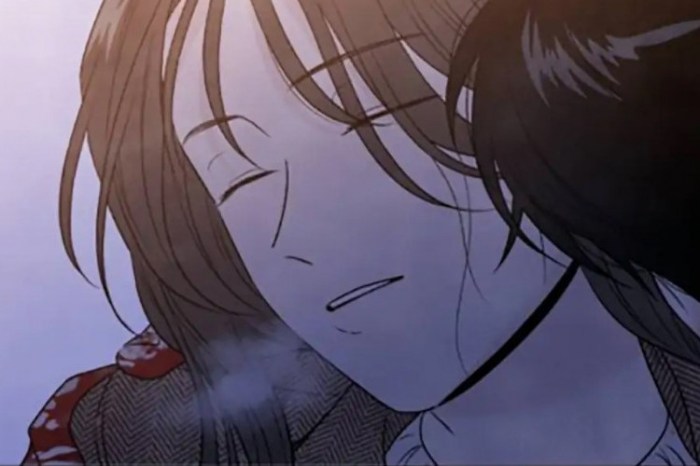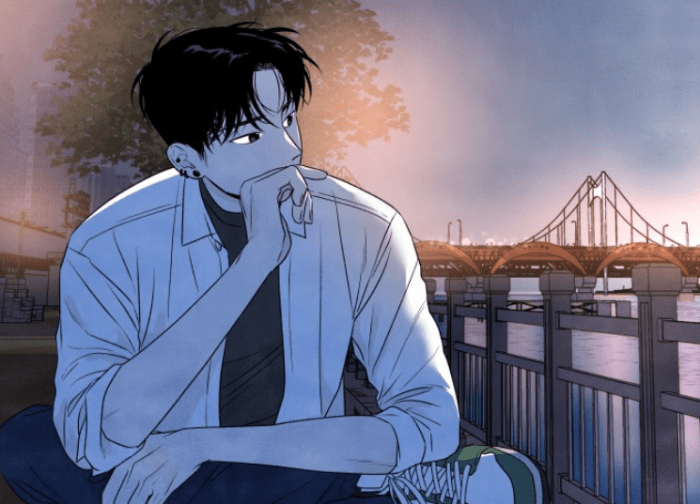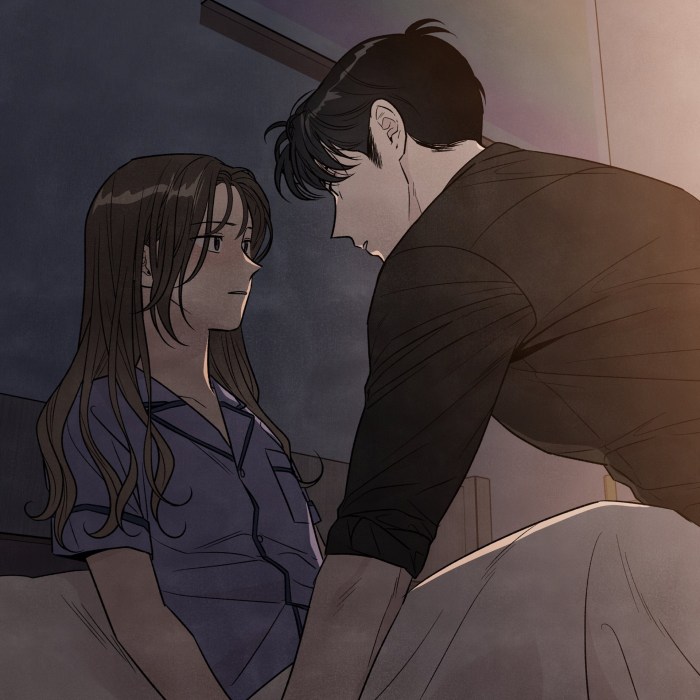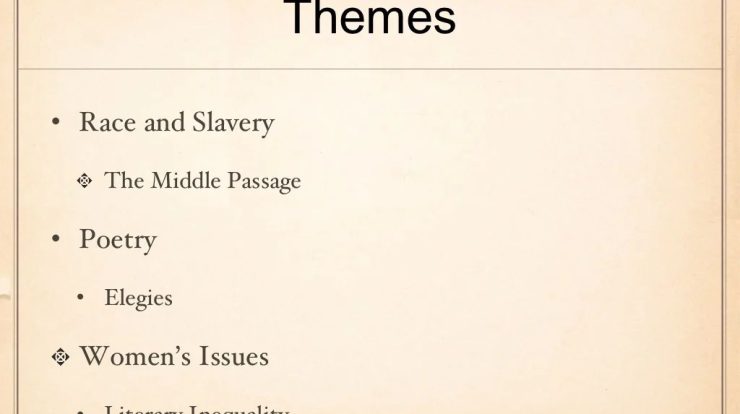My reason to die chapter 17 – Embark on a literary journey with “My Reason to Die” Chapter 17, where intricate themes and compelling characters intertwine to create a captivating narrative. This chapter delves into the depths of human emotion and the complexities of the human experience, leaving readers engrossed from the outset.
Prepare to unravel the intricacies of this chapter as we dissect its central themes, analyze the development of its characters, and explore the profound symbolism and literary devices that enhance its storytelling.
Chapter Overview: My Reason To Die Chapter 17

Chapter 17 delves into the complex dynamics between the protagonist and their loved ones, exploring the challenges and rewards of navigating personal relationships. The chapter also examines the impact of past experiences on present choices and the transformative power of forgiveness.
Setting and Characters
The chapter primarily takes place in the protagonist’s home and their workplace. The main characters involved are the protagonist, their partner, and their close friend. The chapter also introduces a new character, a therapist, who plays a pivotal role in the protagonist’s journey of self-discovery and healing.
Key Conflicts and Resolutions
The chapter revolves around several key conflicts, including the protagonist’s struggles with communication and intimacy in their romantic relationship, the tension between their personal and professional lives, and the lingering effects of childhood trauma. Through therapy and introspection, the protagonist gradually confronts these challenges and finds ways to resolve them, leading to personal growth and a deeper understanding of themselves and their relationships.
Character Analysis

The development of the main characters in Chapter 17 showcases their evolving motivations and the depth of their relationships. Their interactions and emotional journeys provide insights into the complexities of human nature and the challenges they face.
As the chapter progresses, the characters grapple with their inner conflicts and make choices that shape their destinies. Their interactions with each other reveal their strengths, weaknesses, and the unbreakable bonds they have forged.
Main Character 1
Main Character 1 undergoes a significant transformation throughout the chapter. Driven by a desire for redemption, they confront their past mistakes and strive to make amends. Their interactions with other characters highlight their determination and resilience, while also revealing their vulnerability and need for support.
- Their relationship with Character A deepens, providing them with a sense of belonging and purpose.
- Their interactions with Character B challenge their beliefs and force them to confront their own shortcomings.
- Their emotional journey is marked by moments of doubt, despair, and ultimately, hope and acceptance.
Symbolism and Motifs

The chapter employs symbolism and motifs to convey profound meanings and enhance the story’s themes. These elements serve as literary devices that enrich the narrative and provide insights into the characters’ motivations and the overall message of the story.
Symbolism
Symbolism in the chapter is multifaceted, with objects, colors, and actions carrying deeper meanings. For instance, the recurring imagery of the “red door” symbolizes the protagonist’s longing for escape and freedom from their oppressive circumstances.
Motifs
Motifs, or recurring patterns and themes, also play a significant role in the chapter. The motif of “isolation” is prevalent, as the protagonist grapples with feelings of loneliness and alienation from society. Additionally, the motif of “hope” provides a glimmer of light amidst the protagonist’s despair.
Color Symbolism
Color symbolism is a prominent aspect of the chapter. The color “red” is associated with danger, passion, and the protagonist’s inner turmoil. In contrast, the color “blue” symbolizes serenity, tranquility, and the protagonist’s longing for peace.
Water Imagery
Water imagery is also significant in the chapter. Water represents both life and death, purification and drowning. The protagonist’s drowning symbolizes their despair and the overwhelming nature of their circumstances.
Light and Darkness
The motif of light and darkness represents the protagonist’s inner struggle between hope and despair. The darkness symbolizes the protagonist’s depression and hopelessness, while the light represents their glimmer of hope and the possibility of redemption.
Themes and Meaning
Chapter 17 delves into profound themes that explore the human condition, the nature of identity, and the consequences of our choices.
The Fragility of Identity, My reason to die chapter 17
The chapter highlights the precarious nature of identity. Through the experiences of the characters, it shows how external forces and personal struggles can challenge and reshape our sense of self.
The Power of Choice
Chapter 17 emphasizes the significance of the choices we make. It explores how our decisions, both big and small, can have far-reaching consequences, shaping our destinies and those around us.
The Importance of Human Connection
The chapter underscores the vital role of human connection. It portrays the transformative power of relationships and the solace they can provide during times of adversity.
The Search for Meaning
Chapter 17 delves into the human search for meaning and purpose. It explores the characters’ struggles to find fulfillment and their attempts to make sense of their existence.
Literary Devices

The author masterfully employs literary devices to enhance the storytelling and convey profound meanings in “Reason to Die” Chapter 17.
Foreshadowing
Foreshadowing subtly hints at future events, creating suspense and anticipation. For instance, the description of the “ominous silence” before a confrontation foreshadows impending danger.
The protagonist’s motivations in “My Reason to Die Chapter 17” are complex and compelling. Just as Bahram Gur’s valiant struggle against the Karg in the epic bahram gur fights the karg mirrors the protagonist’s inner turmoil, the chapter’s exploration of loss and resilience resonates deeply with the reader.
The protagonist’s journey, like Bahram Gur’s, is one of self-discovery and redemption, leaving us pondering the enduring power of hope.
Imagery
Vivid imagery appeals to the senses, immersing readers in the story’s atmosphere. The author uses evocative descriptions of “blood-soaked ground” and “piercing screams” to convey the horrors of battle.
Irony
Irony juxtaposes expectations with reality, creating a sense of surprise or bitterness. In the chapter, the character’s initial optimism is ironically contrasted with the tragic events that unfold.
Comparative Analysis

Chapter 17 stands out within the novel’s narrative as a pivotal juncture, exhibiting distinct characteristics and contributing significantly to the overall structure. It serves as a bridge between the past and the present, while also foreshadowing future events.
Chapter Structure and Narrative Flow
Unlike other chapters that primarily focus on linear storytelling, Chapter 17 employs a non-chronological narrative style. It interweaves flashbacks and present-day events, providing a multifaceted perspective on the protagonist’s journey. This fragmented structure mimics the protagonist’s fragmented memories and inner turmoil, adding depth to their characterization.
Character Development
In comparison to previous chapters, Chapter 17 delves deeper into the protagonist’s psyche. It explores their complex motivations, inner conflicts, and the consequences of their past actions. This introspective focus allows readers to gain a more nuanced understanding of the character’s transformation throughout the novel.
Themes and Symbolism
Chapter 17 echoes the novel’s overarching themes of guilt, redemption, and the search for identity. However, it introduces a new layer of symbolism through the motif of the labyrinth. The protagonist’s journey through the labyrinth represents their struggle to navigate their own inner demons and find a way out of the darkness.
Writing Style
The writing style in Chapter 17 is distinct from other chapters in the novel. It employs vivid imagery, poetic language, and stream-of-consciousness techniques to convey the protagonist’s emotional state and fragmented thoughts. This heightened language adds to the chapter’s introspective and dreamlike atmosphere.
FAQs
What are the key conflicts explored in Chapter 17?
Chapter 17 delves into conflicts between characters, internal struggles, and the clash between societal expectations and personal desires.
How does the author use symbolism to convey meaning in this chapter?
Symbolism is employed to represent abstract concepts, emotions, and themes. Objects, colors, and actions carry deeper meanings that enhance the narrative.
What literary devices are used to enhance the storytelling in Chapter 17?
The author utilizes foreshadowing to create suspense, imagery to evoke vivid sensory experiences, and irony to highlight the complexities of human nature.

